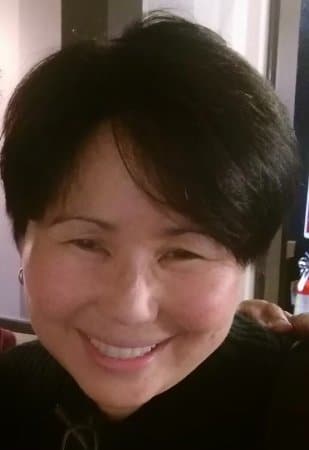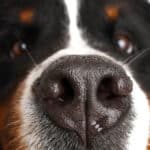
Home » Japanese Akitainu – An Up-and-Coming Breed in the AKC
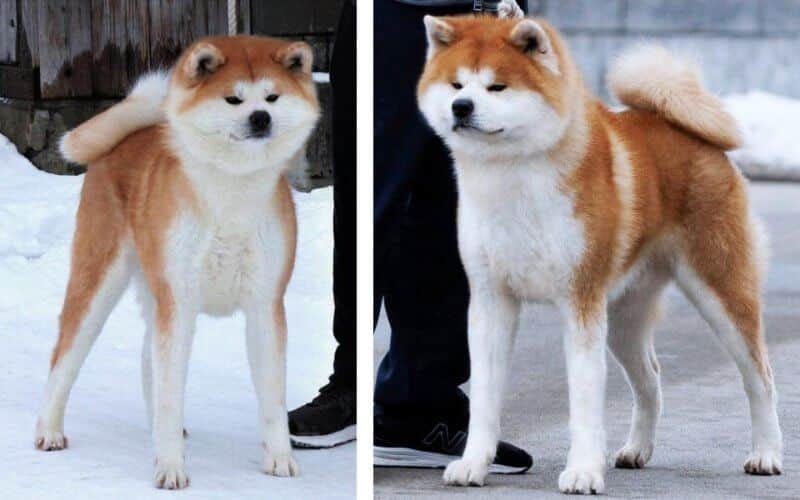
Those of us in the Akita communities across the globe are well aware of the Fédération Cynologique Internationale (FCI) breed split in 1999. While the rest of the world’s national kennel clubs have allowed owners to exhibit two separate breeds of Akita since the early 2000s, it was not until September of 2020 that the Akita Club of America (ACA) voted in favor of giving the Japanese Akitainu Club of America (JACA) permission to apply for breed acceptance into AKC’s Foundation Stock Service (FSS). For breed enthusiasts in the US, this progress is significant and exciting, as we finally have an opportunity to showcase our dogs under our own Breed Standard in the AKC ring.
As of January 1, 2023, the Japanese Akitainu entered AKC’s Miscellaneous Class. Contrary to what some may jokingly say, the breed is not an American Akita Pequeño, nor is it a Shiba Inu Grande. Known as the Akitainu in its country of origin, it is the largest of the six existing native breeds of Japan (Shikoku, Kishu, Kai, Hokkaido, and Shiba are the other five). With JACA as the parent club, various committees and members have been working together along with advisors from the ACA and other breed communities as we move forward towards full recognition.
Our committee members are often asked the following excellent questions, and we are happy to have the opportunity to respond to them here.
Upon examining documents translated from Japanese into English, JACA’s AKC Recognition Committee opted to use Akitainu out of respect to the world’s first Akitainu breed club, the Akitainu Hozonkai (AKIHO), which was established in 1927 in Ōdate, Akita Prefecture, and to the Japanese-American community in Southern California who formed the first overseas branch of AKIHO in 1970. There is already an Akita breed in the AKC (what much of the world calls the American Akita), so to avoid any confusion, Japanese Akitainu was selected as the breed’s name. Furthermore, the breed name is written as 秋田犬 (Akitainu) and not 秋田 犬 (with a space between the characters which would translate as Akita Inu) in Japanese kanji, and that is how it appears in publications penned by early AKIHO North American members.
This is the question that seems to be the most puzzling for Conformation enthusiasts since nearly everyone assumed the breed would follow in the ACA’s footsteps and enter the Japanese Akitainu in the Working Group. This discussion by our AKC Recognition Committee was not taken lightly. What was the historical work of the Akitainu? The Matagiinu, the slightly-larger-than-medium-sized landrace ancestor of the Akitainu, was a snow country hunting dog. Later, some Matagiinu were crossbred for larger size and used to guard the property of the well-to-do. Another landrace ancestor of the modern Akitainu was the Karafutoken, a sled dog. Eventually, selective crossing with western breeds such as Great Dane, Pointer, Bull Terrier, St. Bernard, and Mastiff produced the next set of ancestral iterations, the Shin Akita and Ōdateinu, which were both fighting breeds. Dedicated Japanese breeders worked hard to restore and preserve their breed over many decades.
Ultimately, the committee took into consideration that the modern Akitainu had been restored more as a companion dog, unlike the Kishuken which is still used as a hound in Japan, and that the Non-Sporting Group in the AKC is home to other Asian breeds including the Chow Chow, Chinese Shar-Pei, and most notably, the Shiba Inu, as well as other Spitz breeds, and thus, seemed an adequate fit for the Japanese Akitainu.
The American Akita and the Japanese Akitainu have the same historical origin. The divergence began in the 1950s when Americans started importing the breed to the US while it was still in a transitional phase of restoration in Japan. It was always the intention of Japanese breeders to preserve the breed in a way that would eliminate the influences of crossbreeding to western breeds and to reflect the other five native Japanese breeds. For a more in-depth look at the breed’s development, please visit the history page on JACA’s website.
Because of recent history, JACA is cognizant of the need to remain in step with the breed in the country of origin. It is significant to note that the majority of JACA’s founding members were members of AKIHO North America, and most breeders today in JACA are also members of the North American AKIHO branch. As the Japanese Akitainu progresses to full recognition by the AKC, the club has the responsibility of judges’ education and conveying the essence of the breed.
To that end, we began the distribution of an illustrated general quick guide and a color quick guide for AKC FSS/Miscellaneous Class Open Show judges that we hope judges will continue to find helpful. Our Judges Education Committee would like to offer additional notes that may prove useful. (This information and more will also be included in JACA’s AKC Judges Education Guidebook that the club will publish in the near future.)
While some western Conformation judges are inclined to prioritize structurally sound dogs that can do the original work they were bred to do, the Japanese Akitainu had three jobs in its past (hunting on rough mountainous terrain as opposed to flat ground, guarding, and dogfighting), but the priority in restoring the breed in Japan was type over movement. In particular, head features such as correct eye shape, ear set, and pigment are emphasized in evaluating type. Another aspect of type deemed important to maintain is sexual dimorphism—males and females possess clearly distinguishable facial features and body structure. As the AKIHO judges have taught us, males have a more robust physique and masculine expression while females possess more refinement and a yasashi (sweet) facial expression.
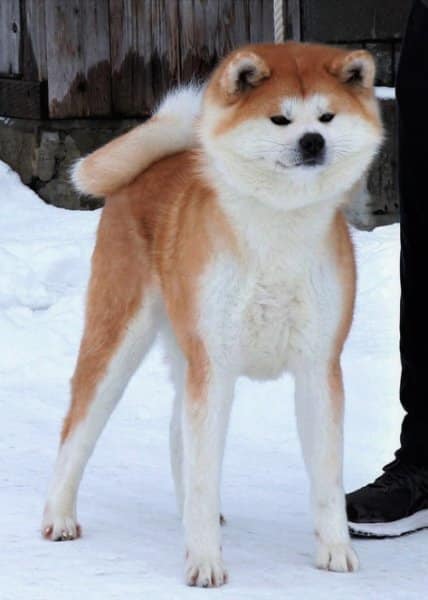
Regarding overall structure and movement, the question of angulation has lately been a topic of discussion within the communities of native Japanese breed enthusiasts, as there seems to be a trend in the west toward what may be considered a more extreme angulation in Conformation dogs for flashier movement. The Japanese Akitainu has moderate angulation and takes moderate strides. They should not have a “big side gait,” nor should they have a kick in the rear while moving, nor the stilted movement of a Chow Chow. Look for balance between head and tail, with an obvious tuck up. While the hair at the tip of the tail should be long enough to reach the hock, exhibitors and their dogs will appreciate a judge’s ability to visualize tail length. It is not necessary for judges to physically extend the tail to the hock to measure correct length.
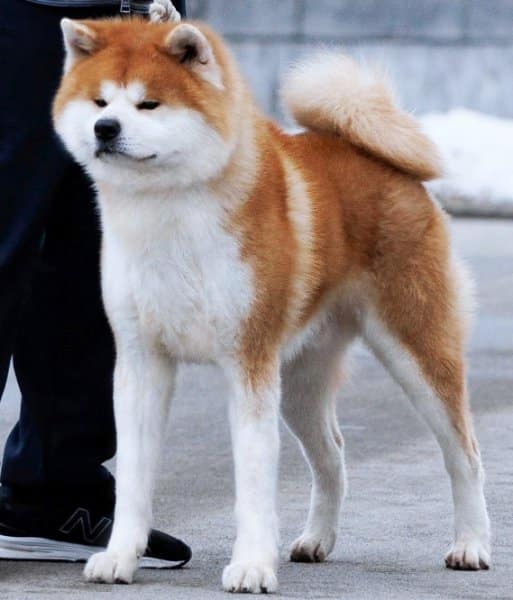
The Japanese Akitainu should be approached in the ring with respect. Thus, a judge who is heavy-handed, suddenly grabs a dog’s muzzle, or engages in close direct eye contact may give a novice handler and their dog an unpleasant experience. Asking the handler to open the dog’s mouth to check the bite and teeth is recommended. Some dogs of this breed may have a tendency toward same-sex aggression or be intolerant of other dogs; therefore, leaving adequate space between dogs is strongly suggested.
It is an exciting time for Japanese Akitainu enthusiasts in the AKC. If AKC judges are interested in receiving a hard copy of the quick guides, please feel free to send an e-mail request to: hope@akita-inu.com
Lonny Cohen became an AKC judge in 1996 and is a current Committee Member and former President of the Akita Club of America. She first fell in love with the Japanese Akitainu in 1998, has been an owner of JAs and a member of JACA for 10 years, and is Chairperson for JACA’s Judges Education Committee and a member of the AKC Recognition Committee. Mrs. Cohen lives in Connecticut with her husband Marc (also an AKC judge), their Shiba Inu, Akita, and Japanese Akitainu.
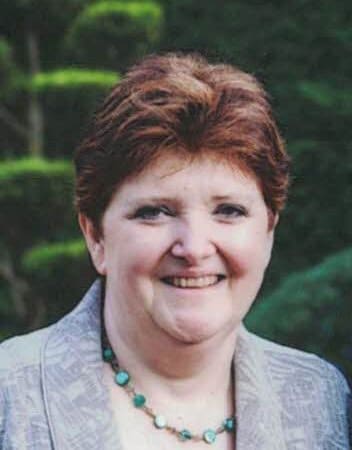
Hope Furugen is an original member and former Vice-President of JACA. She is currently Co-Chair of the club’s Public Education Committee and serves on the Judges Education Committee and AKC Recognition Committee. Hope is also on the Akitainu Hozonkai North America Branch Board of Directors and loves researching breed history.
